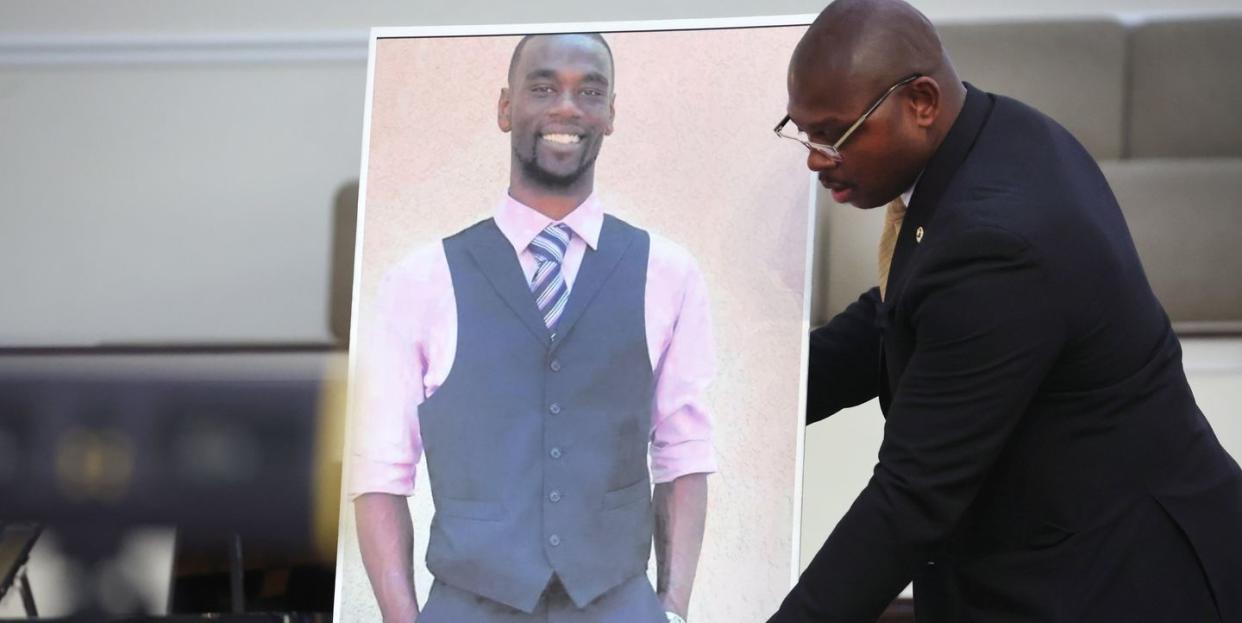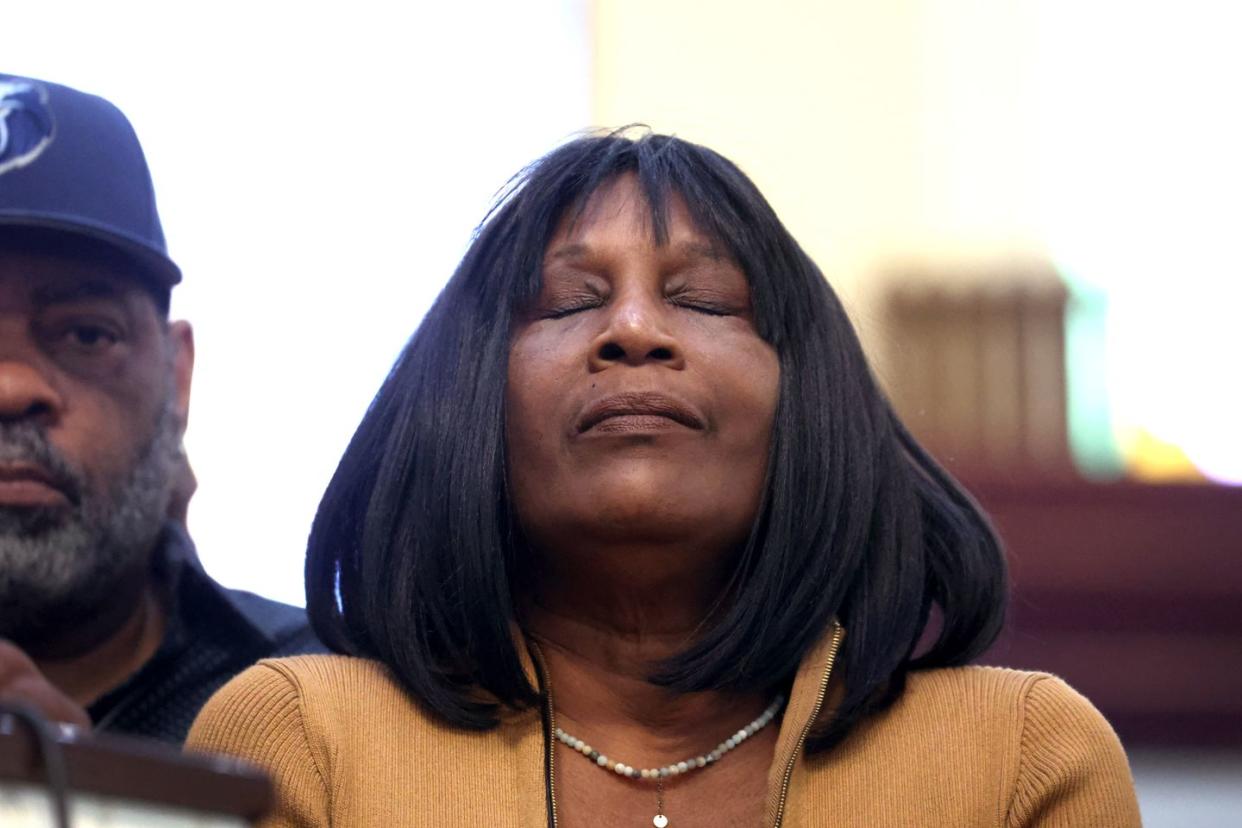Here We Are Again. But This Killing of a Black Man Is Different.

My name is Tyre D. Nichols. I am an aspiring photographer. Well I mostly do this stuff for fun but i enjoy it very much. Photography helps me look at the world in a more creative way. It expresses me in ways i cannot write down for people. I take different types of photography, anywhere from action sports to rural photos, to bodies of water and my favorite.. landscape photography. My vision is to bring my viewers deep into what i am seeing through my eye and out through my lens. People have a story to tell why not capture it instead of doing the "norm" and writing it down or speaking it. I hope to one day let people see what i see and to hopefully admire my work based on the quality and ideals of my work. So on that note enjoy my page and let me know what you think.
Your friend,
Tyre D. Nichols
···
“In Harlem, Negro policemen are feared more than whites, for they have more to prove and fewer ways to prove it.”—James Baldwin
A must.
Tyre Deandre Nichols. Tyre Deandre Nichols. Tyre Deandre Nichols.
Drew his first breath on June 5, 1993.
Drew his absolute last on January 10, 2023.
The reason: A mauling by five (now former) Memphis Police officers.
Tyre Deandre Nichols gone at 29-years-old.
From his parents, from his siblings, from friends, from his four-year-old son.
A victim.
Tyre was born in Sacramento and repped The Golden State his whole short life. He was active in the church and youth groups and would speak of God to his friends (“Call it God, call it the universe, call it what you want—there is a plan for you and you just go, you don't have to question it,” he told his friend Angelia when she was nervous about moving cross country).
Tyre was a skateboarder, what the kids in Sactown called a “street teamer.”
His childhood ace was Kris Volkers. Once he and Kris graduated from Encina High School in 2011, Tyre moved in with Kris’s family. Mrs. Volker recalls how she’d often return from late shifts to discover that Tyre had done the dishes or cleaned the house.
Tyre grew to 6’3” but his Crohn’s disease kept him frail (145 pounds soaking wet, according to his family’s lawyer, Ben Crump). He wore his hair shorn short and sported a thin mustache and geometric goatee in his late teens. But the night the cops bludgeoned him, he wore a chin-strap beard. He favored baseball caps that he often rocked backwards and low-top Vans and accessorized with earrings in both ears and rubber bracelets. He and his ace Kris got their first tattoos at 18. Per Kris, Tyre got a wolf tatted on his leg because he felt it was his spirit animal. Later, Tyre got his mother’s name—Rowvaughn—tattooed on his arm.
Tyre was a mama’s boy, called for her the night the cops punched and kicked him; beat him with a baton, and pepper-sprayed him, all while he was handcuffed.

In 2013 (back when he took bathroom selfies with the hang-loose sign and was prone to sharing inspirational quotes), Tyre met Katie, the young woman he’d soon profess as the love of his life and with whom he’d father his son. For the next couple of years, Tyre posted plenty PDA pictures of him and Katie, gushing, replete with sentimental emojis and captions: “After the long wait I think I’ve found my keeper she’s such a blessing to me:).”
In those days, he was also given to posting half-clothed young blondes—he appeared to prefer them—on his feed, highlighting them for Women Crush Wednesdays or any given day he pleased.
Beyond victimhood.
Tyre was an avid 49ers fan. There’s hella posts about them on his feed, proof hashtagged #ninersgang and #NG. In fact, he was so much of a fan that the program for his funeral included the team’s logo on its cover.
Tyre had two Instagram accounts: a personal (@thelonewolfee) and a photography account (@tnicholsphotography). Tyre attended the Art Institute of California for a stint. He also built a photography website.
Check it and find he favored shooting bridges, architecture, and sunsets.
Tyre loved sunsets.
Tyre had moved to Memphis in 2020 at the urging of his ace Kris and Kris’s wife Christina, who convinced him the city would offer him a fresh start.
More than a victim.
Fun-loving Tyre once entertained his friends by wearing a pink wig and calling himself Tyreka. Music-loving Tyre used to blast his music, which, per his old roommate Christina, was an eclectic mix: Backstreet Boys, rock 'n' roll, and, post his move to Memphis, country.
Tyre landed a gig at FedEx about nine months prior to his death and was living with his parents till he stacked enough loot to get all the way on his feet. Sometimes he’d eat his lunches at home. Sometimes he bopped through the door and greeted Rowvaugh and Rodney, “Hello parents,” an expression that pleased his mother.
It’s the saddest irony, ain’t it, that Tyre told friends he’d been considering becoming a police officer.
Because he wanted to set a good example for his son. Because he believed he could one of the good cops.
Now here he is, dead, at the hands of five bad cops, members of Memphis PD’s special SCORPION unit—deactivated over the weekend, it was created to combat violent crime in the city—a gang that stopped him on the pretext of reckless driving and, in what they described as two “confrontations,” bludgeoned him into a hospital with mortal injuries.
In a familiar refrain, he died three days later.
Memphis authorities released the video of those “confrontations” on Friday night, and while I haven’t and won’t watch them in their entirety, I did see a bit of the fired cops (all of whom joined the department between 2017 and 2020) beating a handcuffed Tyre by turns, did read accounts in the papers.
Credit due to Memphis Police Chief Cerelyn “CJ” Davis for condemning what happened to Tyre and for firing all the officers. (Two fire-department employees have also been fired.) Small credit due to Tennessee Governor Bill Lee for tweeting criticism of the former officers: “They must be brought to justice for this tragic loss of life.” Credit due to the new Shelby County District Attorney Steven J. Mulroy—a progressive Democrat who won office with promises of increased police accountability and criminal justice reform—for charging all the officers with a speed at which the justice system seldom moves.
(But hold onto that last thought for a second. I want to come back to that.)
A grand jury has indicted all five fired officers on second-degree attempted murder (unlike first-degree murder, second-degree murder need not be premeditated), kidnapping, official misconduct, and official oppression.
There’s no compassion in my heart nor understanding for, as Baldwin once explained, what those Black men might’ve needed to prove. Each deserves a long prison bid.
Period.
Tadarrius Bean, Demetrius Haley, Emmitt Martin III, Desmond Mills Jr. and Justin Smith—each deserves infamy.
Nonetheless—coming back to DA Mulroy—I can’t help but acknowledge the paradox that they are five Black men whose malevolence must be viewed against the slave-patrolling origins of American policing. Must also concede that the language painting them as animals/savages—however accurate a description of their deeds—has been used to dehumanize Black men since the first captured Africans landed on this soil.
It’s hard to ignore that, compared with white suspects in similar cases, the charges seemed to have come swifter. That, though the video evidence is damning, none of the men have stood trial. Plus, the part of me on high alert for racism wonders if the public condemnation by Memphis’ top brass would have been as strong if the accused were white men.
And on the up and up, I feel guilty for wondering all of those things.
Here we are again mulling the complicated blame due to Black people in positions of power who oppress other Blacks. He we are again working from what seems a redundant playbook of responses. The spectacle of the grieving mother and/or father or sibling pressed into a spokesperson. The family and friends recalling the deceased as a perfect being. The same few attorneys representing the families. The civil rights icon agreeing to give the eulogy. The vigils, protests, the rare revolt, all accompanied by placards (“THIS MUST STOP,” “JUSTICE FOR TYRE”) and local preachers bull-horning prayers for peace. Pugnacious young activists at the ready. The president phoning the victim’s family and later releasing a dispassionate-ass public statement. The government issuing hardline threats of National Guard or police intervention. The politicians opportuning chances for partisan critique. The writers and—yeah, pointing a conspiratorial finger at my own self—and historians and pundits offering hot takes everywhere all at once. The reformist and abolitionist blaring their agendas. The online fundraising for funerals and who knows what else. The white folks virtue signaling everywhichway they can.
Yet again, here we are. The viewing and the sharing of macabre footage. A small few beseeching the masses not to watch it.
The hoping against hope there won’t be a next time knowing good and gotdamn well there’s always a next time.
While most people involved in these cultural rituals mean well, we are also part of normalizing these tragedies, are also making each subsequent case more palatable.
But tell me, what would happen if the next tragedy occurred with nary our notice? If we can afford silence or inaction?
Parting words. The timing. I keep coming back to the timing of Tyre moving to Memphis. He arrived the same month that the McMichaels murdered Ahmaud Arbery, the month before Kentucky cops shot Breonna Taylor to death, just three months shy of Derek Chauvin kneeling the life out of George Floyd. Keep coming back to his hope that Memphis would be the change he needed. Back to him being vocal about the import of Black Lives Matter.
It’s well known—the trinity of black death (and the global pandemic during which it occurred) that marked his first months in Memphis catalyzed a national movement into a global one.
Dear Lord, let there never be a period equal to the spring/summer of 2020. Still, we could argue that the handling of Tyre’s tragic death— the increased transparency, the stern denunciation, the speedy charges—are a yield of that span, our ritualized responses included.
BLACK LIVES MATTER. JUSTICE FOR TYRE. BLACK LIVES MATTER. JUSTICE FOR TYRE. BLACK LIVES MATTER. JUSTICE FOR TYRE.
If it’s true, as Dr. King once said, that riots (I prefer revolts) are the “language of the unheard,” then might we call what’s happening in Memphis—troubling racial aspects and all—proof that a few of the right somebody’s have heeded?
You Might Also Like
